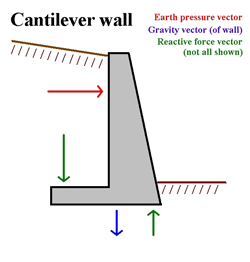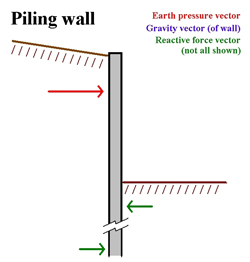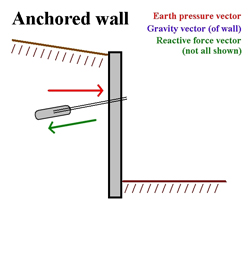Gravity retaining walls
This standard wall type holds earth mainly through its own weight. It can topple quite easily as the internal leverage of the pressure of the earth behind is very high.
Piling retaining walls
This wall uses long piles fixed by soil on both sides of its lower length. This type of wall can take high loads if the material of the piles themselves can resist the bending forces.
Cantilever retaining walls
The cantilever wall (that can extend either under the soil it is holding back or in the opposite direction) uses the pressure from the earth which would push the wall over to stabilise itself with the second right angle arm.
Anchored retaining walls
This wall keeps itself from falling by being anchored (by cables) into the rock or earth.
Which is the right retaining wall construction for your project?
Aesthetic value:
- create a formal uniform look on sloping land
- large visual feature in a garden
- decorative raised garden bed
Practical need:
- stabilise or hold soil back
- step support
- drain excess water (such as diverting rainwater run off from house foundations)
- keep water within a property (particularly in eco developments)
- prevent erosion
The strength and durability of a professionally built timber retaining wall is immense and can provide as much stability as a concrete block wall with the added good looks that only wood can provide.
Wood retaining walls can be a stylish alternative to concrete block or brick walls at a fraction of the price. Of course, the structural purpose of the retaining wall will dictate the materials, size and dimension, and cost.
Using treated timber is essential to prevent rotting and attack from termites. You can choose ‘raw’ timber or cleanly planed timber for a more formal effect, which can also be painted to match the surrounding environment.
At Old Mate Fencing we primarily employ the piling wall option or the gravity wall option depending on the force to be exerted on the wall.





